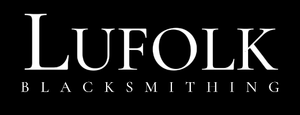Jewelry bearing runic inscriptions offers a fascinating glimpse into ancient Norse and Germanic cultures, with examples dating back to the Viking Age and earlier. As reported by various archaeological sources, these artifacts range from rings and brooches to pendants and belt buckles, each telling a unique story through their intricate designs and symbolic engravings. The runic inscriptions on these pieces served multiple purposes, from marking ownership and providing protection to displaying status and religious devotion, making them invaluable historical artifacts for understanding Viking society and beliefs.
Types of runic jewelry
Runic jewelry encompassed a wide variety of ornamental items, each serving specific purposes and reflecting different aspects of Viking culture. Here are some of the most common types of runic jewelry:
- Pendants: Could be in the shape of Thor's hammer (Mjölnir). These were popular amulets.
- Arm rings: Served as both decoration and currency, sometimes inscribed with runes indicating ownership or magical properties.
- Brooches: Functional items used to fasten clothing, could be adorned with runic inscriptions.
- Rings: Both finger rings and neck rings bore runic inscriptions, with some Anglo-Saxon examples featuring elaborate designs.
- Bracteates: Thin, single-sided gold medallions with stamped designs, often including runic inscriptions. About 133 Elder Futhark inscriptions have been found on bracteates.
- Fibulae: Decorative clasps or brooches, with approximately 50 Elder Futhark inscriptions discovered, particularly popular in 6th to 7th century Alemannia.
- Belt parts: Including plaques, buckles, and strap-ends, these items sometimes featured runic inscriptions, such as the Vimose buckle and Pforzen buckle.
Context and significance
Runic inscriptions on jewelry emerged as early as the 5th century AD. These artifacts played a crucial role in Viking society, serving multiple purposes beyond mere adornment. Inscriptions often marked ownership, conveyed magical properties, displayed social status, and represented religious devotion. The practice of inscribing runes on personal items was widespread, reflecting the integration of runic literacy into everyday life. Notably, the discovery of runic jewelry has provided invaluable insights into ancient Nordic and Germanic cultures, shedding light on their beliefs, social structures, and artistic traditions.
